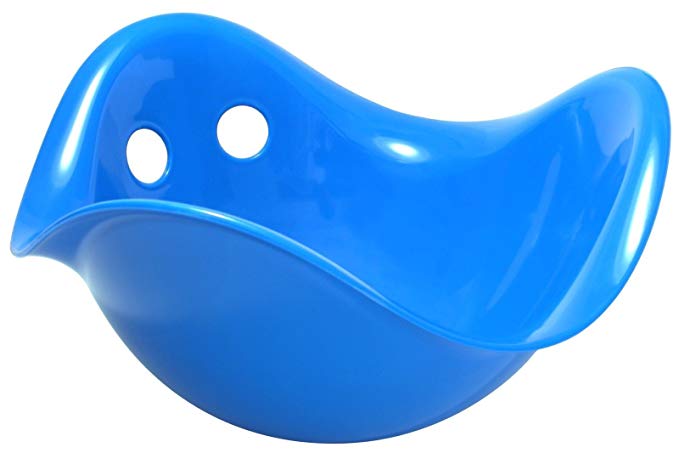One of the best toys for children on the Autism Spectrum is one that does not have sound, lights, and other stimulators. It should also not exacerbate frustration tendencies or attending issues.
It can be difficult for parents, family members, and caregivers to find toys that avoid those aspects, while simultaneously providing fine motor, processing, creativity, gross motor, and social skills (to name a few!). One product to consider is one often found in the playrooms of modern parents with typically functioning children due to its open ended play pattern: the Moluk Bilibo by Playmonster.
Open Ended Play
I personally selected the Bilibo on my personal blog as one of my top toy picks for the holidays back in 2010. The Bilibo’s unique shape arouses curiosity, engages imagination, and stimulates creativity. Sit in it, stand on it, spin in it, or stack it. Rock it, fill it, wear it, or slide it. The imaginative uses of the Bilibo are limitless, which is its charm.
The Switzerland-designed Bilibo has copious awards under its belt, which is no surprise because child development experts had a hand in designing its iconic shell shape and bright colors for alluring and attentive play. It’s lack of bells, whistles, lights, and sounds are also what makes it an amazing open-ended, creative, activity toy.
Made of nontoxic, shatterproof polyethylene, the Bilibo will withstand even the most ruff indoor (or outdoor) play. Use it in backyard, the park, the beach, or even the sledding hill. The Bilibo helps develop balance, coordination, and motor skills. Intellectually, it stimulates creativity, imagination, and role playing, and other elements of social development.
There are even mini Bilibos, which can be fun for stacking, stepping stones, water play, patterning, and more creative ideas.
Bilibo Activity Ideas
- Ask your child to list five things they can do with the Bilibo for a processing skill opportunity.
- Have your child toss foam toys or squishes into the Bilibo for a fine motor activity.
- Have your child toss foam balls or toy squishes into the Bilibo in a certain order for sequencing and patterning opportunities.
- Encourage your child to use the Bilibo as inspiration for writing a story. Then have your child act out the story with the Bilibo for social/emotional therapy.
- Depending on their size, have your child sit or stand on the Bilibo. If standing, have them balance. Then balance on one foot. Then on one foot while touching their nose, as well as other actions for processing and listening activities. If sitting in the Bilibo, use it for occupational therapy core strength and balancing exercises from a seated position.
Do you have a Bilibo? What do you do with it?
If you had one, what play ideas do you have for it? Share in the comments below!

